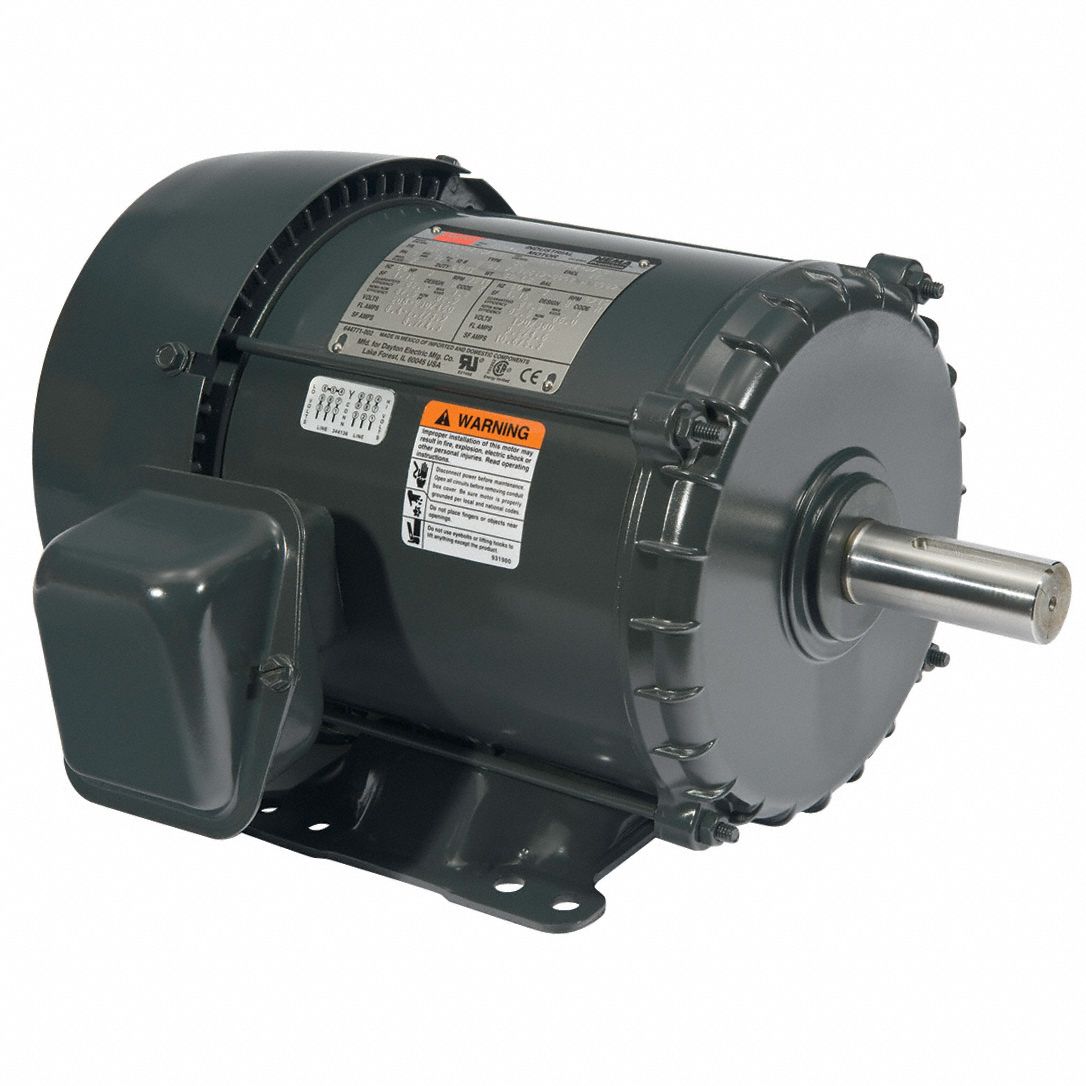

How To Choose a Replacement Motor
By Grainger Editorial Staff 11/2/23
Learn the key indicators for when to replace a motor and how to select the appropriate replacement motors. Understand how factors like motor type, lifespan, operational conditions and changes in application influence your choice.
When it’s time to replace an electric motor, choosing the right one isn’t always that clear. In some situations, more than one motor will do the job, so the replacement motor doesn’t have to match the old motor’s specifications exactly. Matching the replacement specs with the old motor largely depends on the design and the application for which the motor is used.
When Is it Time for a New Motor?
While there’s no exact industry standard for a motor’s life expectancy, most new motors should last about 10 years. This assumes the motor was installed properly and that the manufacturer’s maintenance guidelines have been closely followed. Causes for reduced motor life include manufacturer defect, utility interruptions such as brown outs, or if the wrong motor is used for the application. Other common causes include running a motor without appropriate electrical circuit protection or the lack of an established maintenance or inspection plan.
If the replacement motor will be used the same way as the old motor, the motor’s nameplate will provide the most important specifications, including:
- Horsepower
- RPM
- Frame Size
If there are changes in specifications needed due to adjustments to the application, it can be a little more complex than a one-to-one replacement. Examples of this include changes in rpms or horsepower, if the new motor needs to feature a reversible rotational direction or if it needs to be speed-controllable. Other considerations include the motor’s mounting position as well as its physical dimensions.
This downloadable form lists specifications, including some by application, to help you narrow down your choices and determine an appropriate motor replacement.
More Options to Consider
Purchasing a motor is a process that requires many decisions about the job it’s expected to handle. Beyond the application and environment, there are other considerations for choosing the right motor for the job.
For example, in applications where a motor is started automatically and operated out of sight, such as those that are thermostat controlled, the motor must be thermal protected against overheating or overloading.
If the motor will be used in a fan built into a structure such as a wall-insert fan or bathroom exhaust fan, and will therefore operate unattended, it must meet the UL 507 standard, which requires that the motor have either a manual reset thermal protector or a thermal cutoff device. When operating numerous motors 24/7, it might be more cost-effective to choose a premium efficiency motor over standard efficiency for the potential energy savings.
The Many Different Types of Motors
Because motors do a lot of jobs, there are many different types.
- Alternating current (AC) motors convert electrical current into torque using alternating current from an electrical power source.
- General purpose DC motors generate a constant torque for heavy-duty applications such as elevators, cranes and conveyor belts.
- Definite purpose motors are built to handle very specific jobs such as for braking or hoisting a boat. Some motors are designed to be used in specific environments. For example, washdown motors are built to withstand constant washdown environments typical of the food processing industry, or any application that will expose the motor to heavy humidity. Farm-duty motors are built to handle tough, dirty agricultural environments, and hazardous location motors are contained to protect them in environments where there’s a risk of ignition due to sparks from combustible dust or hazardous vapors.
The information you need to make an informed choice about purchasing motors is available starting on page 3 of the online Grainger Catalog. You can also find more information on motors and other equipment you need to run your facility here.

Safety Management
6 Tips to Help Prevent Slips, Trips and Falls
Identify the fall hazards in your workplace and implement a fall safety program. Check out these tips from Grainger so you can mitigate risk.
![]() Our Latest KnowHow
Our Latest KnowHow

Facility Pest Control: How IPM Helps Safely Manage Insects
Discover safe, compliant pest control with IPM. Find tips for insect monitoring, sanitation and safe insecticide use in commercial facilities.
The information contained in this article is intended for general information purposes only and is based on information available as of the initial date of publication. No representation is made that the information or references are complete or remain current. This article is not a substitute for review of current applicable government regulations, industry standards, or other standards specific to your business and/or activities and should not be construed as legal advice or opinion. Readers with specific questions should refer to the applicable standards or consult with an attorney.













